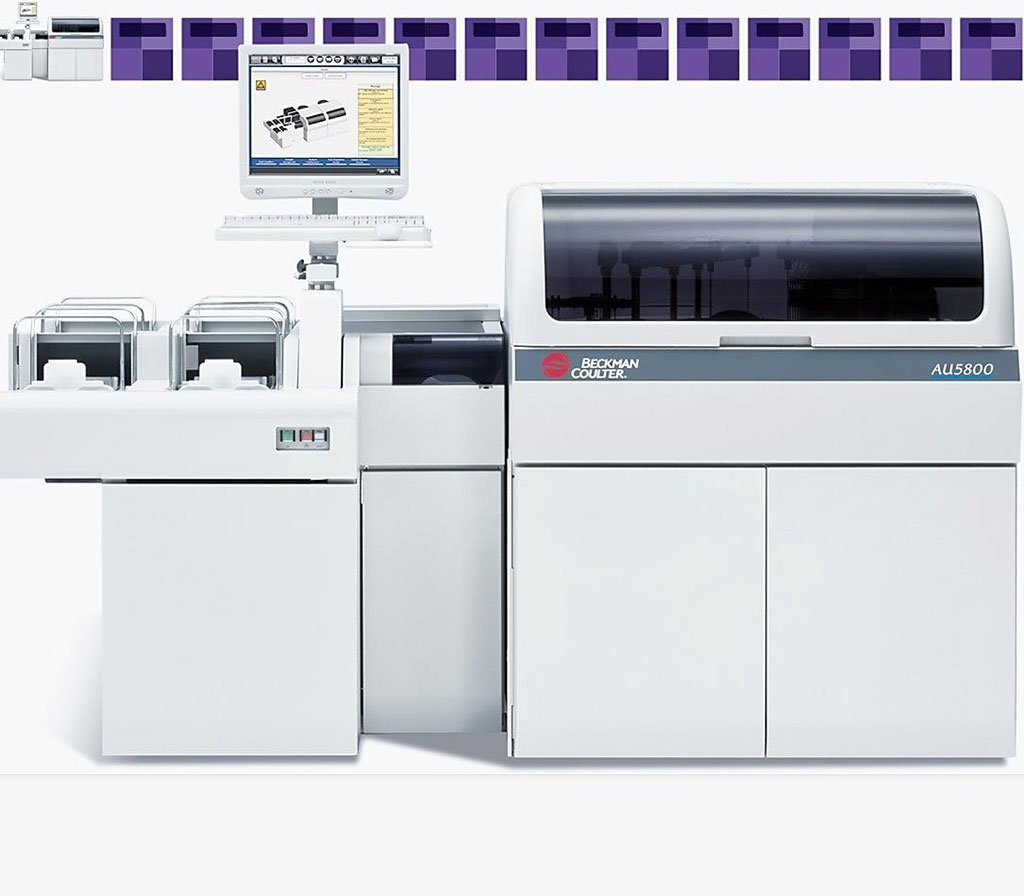High sdLDL-C and Lipoprotein(A) Levels Correlated to Coronary Arteriostenosis in Takayasu Arteritis
By LabMedica International staff writers
Posted on 11 Nov 2021
Takayasu arteritis (TA) is a rare vasculitis that mainly involves the aorta and its major branches. TA is mainly seen in young women aged 20–40 years and is most often encountered in Japan, Southeast Asia, India, and Mexico. Due to nonspecific clinical features, TA patients with coronary arteriostenosis might be misdiagnosed or inappropriately treated.Posted on 11 Nov 2021
Dyslipidemia plays a role in the pathogenesis of TA, and the lipid profiles in TA patients are pro-atherogenic. Small dense low-density lipoprotein cholesterol (sdLDL-C) is small and highly dense relative to other LDL-C particles and thought to be more atherogenic than the large buoyant LDL (lb-LDL) due to greater penetration into the arterial wall, a prolonged plasma half-life, lower hepatic LDL receptor affinity, and higher susceptibility to oxidation.

Image: The Beckman AU5400 automatic biochemical analyzer (Photo courtesy of Beckman Coulter)
Clinical Laboratorians at the Capital Medical University (Beijing, China) retrospectively studied 190 TA patients and 154 healthy subjects. TA patients were divided into three categories based on the degree of coronary stenosis: Group I, stenosis >50%; Group II, stenosis 1%–50%; and Group III, stenosis 0%. Independent risk factors for coronary arteriostenosis in TA were identified by logistic regression, followed by receiver operating characteristic curve analysis to determine the specificity and sensitivity of risk factors and Youden's Index score calculation to determine the cutoff points.
The team obtained early in the morning, venous blood samples were from fasting TA patients and healthy controls. The team previously compared methods for measuring sdLDL-C, and a Beckman AU5400 automatic biochemical analyzer (Beckman Coulter, Brea, CA, USA) and was used in the present study to measure novel and traditional lipid parameters and biochemical indicators, including the sdLDL-C, Lp(a), total cholesterol (TC), LDL-C, HDL-C, and triglyceride (TG) concentrations within 5–6 hours after sample collection. The Sysmex XE-2100 (Sysmex Corporation, Kobe, Japan) was used to determine complete blood counts.
The investigators reported Takayasu arteritis patients had significantly higher serum levels of sdLDL-C and Lp(a) than healthy controls. The total cholesterol, triglyceride, LDL-C, sdLDL-C, and Lp(a) levels and the sdLDL-C/LDL-C ratio in Group I were significantly higher than those in Groups II and III. An elevated serum sdLDL-C level elevated the risk of coronary arteriostenosis by 5-fold (cutoff value, 0.605 mmol/L). An increased serum Lp(a) level increased the risk of coronary arteriostenosis by 3.9-fold (cutoff value, 0.045 g/L). An elevated sdLDL-C/LDL-C ratio increased the risk of coronary arteriostenosis by 2.1-fold (cutoff value, 0.258).
The authors concluded that TA patients had higher serum sdLDL-C and Lp(a) concentrations than healthy individuals and TA patients with coronary arteriostenosis had significantly higher serum levels of sdLDL-C and Lp(a) than those without coronary arteriostenosis. Additionally, serum sdLDL-C and Lp(a) concentrations and the sdLDL-C/LDL-C ratio might be used as diagnostic factors for coronary arteriostenosis in TA patients. The study was published on October 28, 2021 in the Journal of Clinical Laboratory Analysis.
Related Links:
Capital Medical University
Beckman Coulter
Sysmex Corporation




 assay.jpg)








